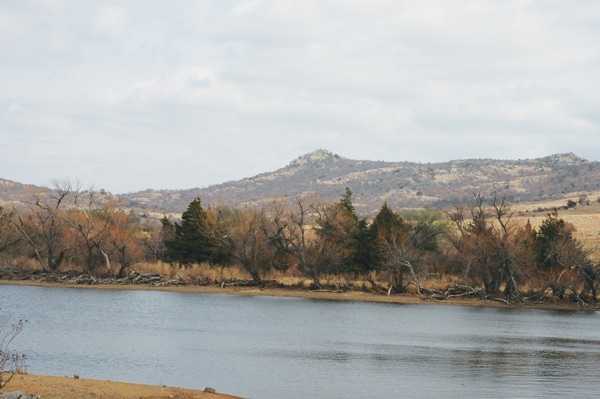
Monsoon rains in the mountains in July and Aug. and heavy Sept. rains have brought drought relief to most areas of New Mexico, but with the exception of eastern reaches of the state, more rain will be needed before spring to prepare farmers and ranchers for a new crop and calf season.
Since July 1, rainfall amounts across the state have ranged from a trace to over 14 inches near Hope, New Mexico, lifting extreme and exceptional drought conditions statewide.
According to the University of Arizona's Climate Assessment for the Southwest, the monsoon season delivered needed rainfall, but since Sept. 1 above-average precipitation fell in almost all of the state with many areas seeing rainfall totals of two to three times the average for this time of year.
The assessment says several slow moving upper level disturbances sparked heavy precipitation events in mid-September that led to flash flooding and several dam breaks in northern and central parts of the state.
While some of these rain events were damaging, they have contributed to a second consecutive month of substantial improvements in short-term drought conditions. On June 18, more than 90 percent of New Mexico was classified with extreme or exceptional drought. This number fell to 66 percent in mid-August. In the most recent update of the U.S. Drought Monitor, published on September 17, only about six percent of New Mexico was classified in exceptional or extreme drought conditions.
If you are enjoying reading this article, please check out Southwest Farm Press Daily and receive the latest news right to your inbox.
Much of the southwestern quarter of the state is now classified as abnormally dry, which is not considered an actual drought classification. By comparison, these areas were tagged as severe to extreme over the past year.
Twenty five of the state's 33 counties were reporting flood damage as of Sept. 25. The area of the state that may have benefited the most include eastern New Mexico where Pecos area reservoir storage for farmers went from 11 percent to 92 percent full in a space of less than two weeks.
"I can honestly say this is the first time in 30 years that anyone has heard me say we have had a break from the drought conditions," chuckled Woods Houghton, County Extension Service agriculture agent in Carlsbad.
Houghton, like most Eddy County alfalfa and pecan producers, says the rains have come "none-too-soon.
"A lot of hay growers have cut back planted acreage significantly in recent years because of dry conditions. But with the recent rains, I am seeing grasses cropping up on rangeland that haven't been there in a number of years, and area reservoirs are mostly full again, so the prospects for next year are looking good at the moment," he said.
Houghton also sees guarded optimism among most producers.
"Some of them have given a lot of pastures a rest in recent years because of exceptionally dry conditions and a lack of irrigation water, but many of them have already plowed them up in anticipation of spring planting next year," he added.
Rain still needed in parts of the state
Southeastern New Mexico received the greatest level of relief from recent rains, but south central areas of the state still need more rain. Elephant Butte, the largest water storage reservoir on the Rio Grande River, which holds two million acre feet of water, gained more than 50,000 acre feet in recent storms. While reservoir levels rose 4.4 percent full to 5.9 percent full over a five-day period, additional recovery is needed before spring planting.
New Mexico officials say the rains over the last 45 days have benefited New Mexico in a number of ways. In addition to replenishing or raising levels in reservoirs across the state, heavy rains just ahead of hunting season could go a long way in providing better forage for wildlife.
Another benefit from extreme drought conditions is lowering the potential for wildfires across the state. The summer months were another destructive time for wildfires for much of the Southwest and the fire threat has been greatly reduced as a result of heavy rains and higher humidity across New Mexico.
Officials say other benefits include less competition at streams and ponds between livestock, wild horses and other wildlife, and could be beneficial in curbing the threat of animal diseases like those spread by feral hogs and rabid animals.
While flood water caused damage in a number of state parks and recreational areas earlier this month, state park officials report most facilities have re-opened to the public. In addition, flood water caused several breaches in dams across northern areas of the state but most work on those dams is either complete or nearing completion.
In spite of raging flood waters and other problems associated with the rains, most farmers and ranchers across the state are pleased to have received substantial relief but hope more rain falls in the weeks leading up to spring planting.
Other articles of interest on Southwest Farm Press:
Texas drought persists despite scattered rainfall
About the Author(s)
You May Also Like




